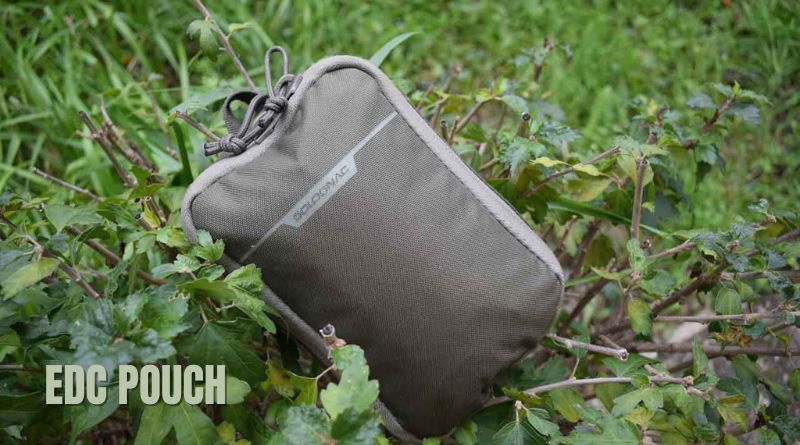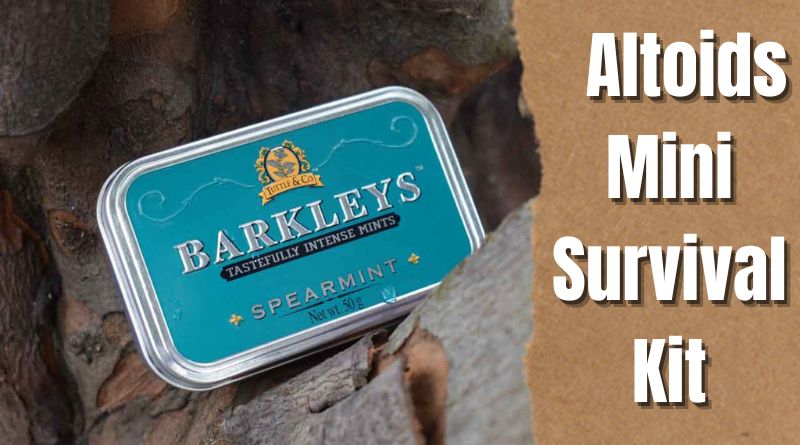EDC Survival Kit Contents
A survival kit is a set of tools and supplies that are to be used as an aid to assist the person in a survival situation. Survival kits vary in size and purpose. In this day and age, where the world is such an uncertain place, everyone should carry a survival kit. An EDC survival kit is small enough to be carried every day. Depending on the person’s comfort level, if they carry an EDC bag, pouch, or purse. The size of the kit will vary, each Kit should be customized to the person’s specific needs and skillset.
Custom Build An EDC Survival Kit
Now it’s time to decide on the survival kit. The first question is what size kit will be comfortable enough to be carried every day. After all, that is the purpose of an EDC kit. So if the biggest kit you are considering carrying is about the size of an Altoids tin, then click on this article Altoids Survival Tin.
If you are willing to carry a pouch-sized kit, be it a waist pouch, fanny pack, or even better have an EDC bag. Then read on.
Every survival kit regardless of size should be a custom build, every item in there should be something the owner of the kit knows how to use. If possible, the items should have multiple uses. Some essential items should have a redundancy or backup item.


Build Based On Need
Most kits will cover a wide variety of possible scenarios. But some threats are more likely than others. For example, a person living in a big city will have a different EDC Survival kit than a person living in a rural area. The same applies to a person living in a tropical country and a person living in a cold country. Some items will undoubtedly be the same, but there will be differences, so keep that in mind when assembling your kit.
Research
Write down a list of possible threats in the area. With a little bit of research, it is possible to get a general risk assessment. This threat assessment will not be able to cover all eventualities, unforeseen disasters are always a possibility, luckily most well-thought-out survival kits will cover a wide variety of scenarios. The main purpose of the threat assessment will be to assist in prioritizing during the planning stages of prepping, as well as what gear has a low priority or are unnecessary. Eg: winter jackets in Hawaii.
Risk Assessment
There is a lot of information easily available to the general public. Start by analyzing historical data and forecasted data.
Historical data
Data research on what happened in the past can provide clues to what may happen in the future, historical data can provide insight into the frequency of:
Natural disasters like earthquakes, hurricanes, snowstorms, and floods.
Violent crimes, robbery, home invasions, muggings.
Social unrest, riots, protests.
Forecasted Data
Unless you happen to be psychic, forecasted data will have to be based on data collected from the news, TV, internet, radio, and observing the situation around you. Once there is sufficient data, best judgment will have to be used.
Making An EDC Survival Kit
Now that you have an idea of what to prepare for, start assembling your EDC survival kit. remember that this kit is not a bug-out bag, it is a small survival kit, you will have to choose your items carefully, based on size, weight and utility. You will want the kit to be compact and light enough that you will carry it every day. If the kit is too large or heavy, the tendency is to leave it behind and that defeats the purpose of making the survival kit.

EDC (Everyday Carry)
Everyday carry is a part of your EDC survival kit, this includes everything from your boots up to your hat (if you wear a hat).
If you are here looking at how to build a survival kit, it is safe to assume that you have a few EDC items on you. The most common of which are:
Worn Items :
Sunglasses ballistic glasses are recommended, there are budget friendly versions available
Clothes that suites the local environment (most people frown on seeing a naked prepper running around 😀)
Socks Merrino wool ones are great, Darn Tough Merrino Wool Socks
Shoes, if your shoes use laces, consider replacing them with paracord, It is always nice to have a little bit of extra cordage.
Optional Items
Gloves are Highly recommended, even if only a simple pair of Mechanix gloves
A Shemagh or bandana is an amazingly versatile piece of gear, never leave home without one
Belt
Knee Guards the ones that slip on inside the pants are recommended Timberland PRO Knee Pad Inserts
Carried In Pockets
Wallet (cash, credit cards, business card with families phone number and ID).
Knife (folder or fixed blade) make sure it complies with local laws
Multi-Tool as above, local laws apply, in some countries even multi-tools are illegal. My Multi-tool of choice is the Leatherman Sidekick
Torchlight preferable LED, water resistant and durable like the Fenix PD35
Keys, home keys, car keys, gate keys
Phone
Lighter
SD card with essential information such as digital copies of birth certs, passports, driver’s licenses, documents of ownership of cars, houses, and any assets that you require documentation, family photos are also a good idea. Make sure that all the data is encrypted with a copy of the encryption software on the SD card (I use Truecrypt, but there are a wide variety of encryption software available, choose the one that you trust).
Watch get a durable. waterproof model, and make sure it’s analog like the G-Shock GA700UC-3A. Analog watches can be used to navigate with (if a person knows how).
Pocket Organizers are great for keeping things from flopping around in your pockets. I chose to make my own with some leather I had laying around. But if you choose to buy one Hitch & Timber makes decent pocket organizers.
EDC Survival Kit Items
A well-thought-out EDC survival kit can be used as a GHB (Get Home Bag). Keeping in mind of course that the majority of people do not commute that far. Let us assume that the EDC pouch is of medium size, small enough to throw into a backpack, or attach onto a belt. Also assuming that the above Worn Items and Carry In Pocket Items are on the person here is a list of Survival Kit items.
EDC Kit List
Pouch, EDC Bag, Backpack
Poncho pocket-sized
Raincoat foldable, some of them pack small like the 511
Water Purification Tablets
Water Filter Sawyer MIni is the best compact water filter I have tested so far
Paracord, the more the merrier
Carabiner (the real kind, not the gear-hanging models)
Ferro Rod and striker
Waterproof Matches
Magnifying glass
Mirror
Sewing Kit (Needles and threads)
First Aid Items (preferably an Ifak rather than a boo boo kit)
Mylar Blanket
Duct Tape (rolled onto either a Bic or a card)
Torchlight (backup to the pocket carry)
Knife Sharpener (Fallkniven DC4, small compact and efficient)
Tweezers
Cable Ties
Pen and Paper
Cash (a little extra)
Nail Clippers
Power bank (to recharge devices, phones, torchlight, etc.)
Cables and chargers
Plastic Bags
Ziplock Bags
Hand Sanitizer
N95 Face Mask
Compass
Ranger Beads
Energy Bars
Mini Fishing Kit
While this may seem like a lot, most of the items are quite small, and if well packed will fit in a small EDC bag or waist pouch. I have even seen some people pack all of this into a covert tactical vest like the 5.11 Fast tac vest
Everyday Carry Items In Daily Use:
Many of the items in an EDC kit come in handy in everyday life, people do not realize that these kits are not only for survival situations but also come in useful in everyday life.
Multi-tools like the Leatherman Sidekick I carry came in handy around the house and workplace. I have fixed a busted faucet, light switch, and all sorts of things on the fly with the tools in my kit.
Just remember to replace use once items as soon as possible. Eg: if you use a band-aid, replenish the stock.
If you are interested in Altoids Mini Survival Kits and our thoughts on those, Click on the Image below
